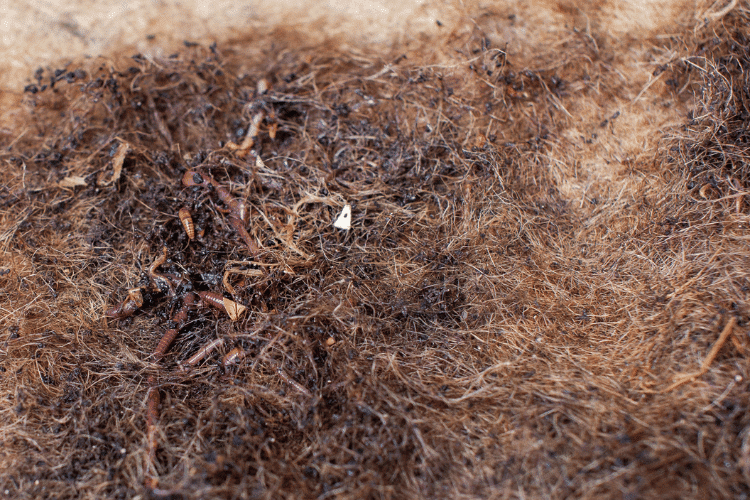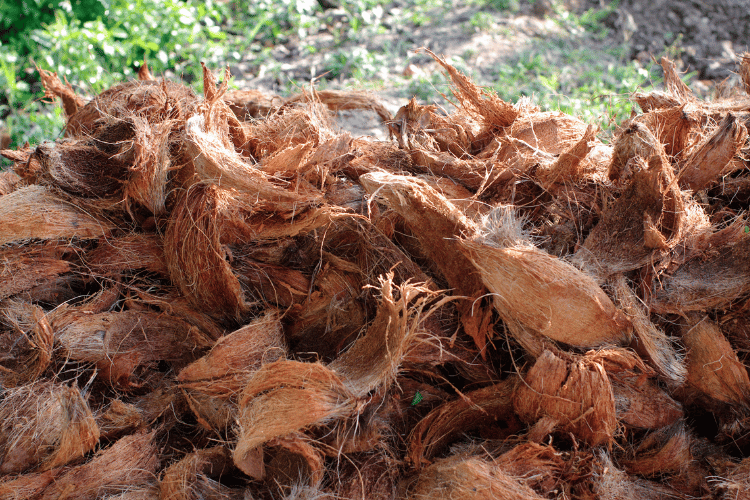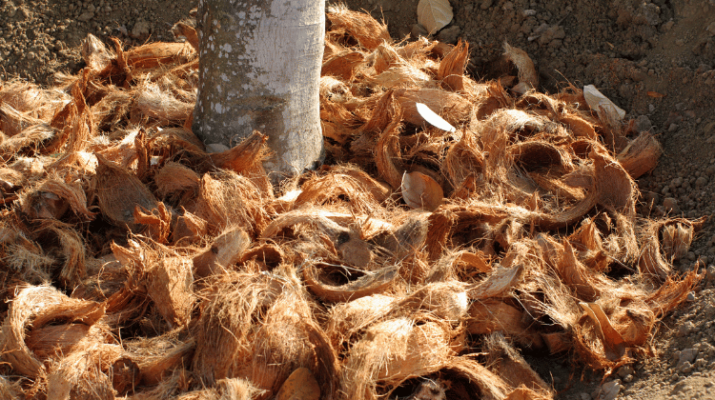Coco coir is a sustainable and renewable growing medium that has become popular in recent years as an alternative to peat moss.
Made from the fibers found between the husk and outer shell of coconuts, coco coir is prized for its ability to retain moisture and provide excellent aeration when utilized in worm farming and vermicomposting applications. But do worms eat coco coir?
This article will take an in-depth look at the composition of coco coir, the diet, and digestion of earthworms, and whether they can eat this unique material.
TL;DR

Although worms cannot directly consume coco coir due to its tough fibers, this coconut husk extract serves as a renewable alternative to peat products for vermicomposting bedding and worm farming purposes.
With proper preparation like pre-composting with nitrogen and optimal moisture, coco coir fosters vital microbial activity and worm health to facilitate natural food scrap decomposition.
The Composition and Properties of Coco Coir
Coco coir consists of the long, stringy fibers that make up the thick mesocarp layer of the coconut fruit. To extract the fibers, the husks of mature, brown coconuts are crushed and beaten to loosen and remove this fibrous material.
The result is a sustainable, reusable byproduct that has excellent moisture retention capabilities while still allowing airflow between particles.
Compared to actual soil, coconut coir has a more neutral pH and does not provide any inherent nutrients on its own—it must obtain nutrients from added composts, manures, or nutrient solutions.
These properties make coco fiber an ideal worm bedding material and an alternative to peat for gardeners focused on responsible environmental practices.
The Diet and Digestion of Earthworms
Earthworms are voracious consumers of rotting organic matter. Most species live in the top layers of soil and leaf litter, ingesting microorganisms, tiny soil particles, decomposing plant roots and vegetation, and even bits of shredded paper or corrugated cardboard mixed into garden beds or compost piles.
However, an earthworm’s digestive system is not designed to break down more fibrous, difficult-to-decompose materials like coco coir.
The worms swallow food whole, coating it with enzymes in their crop to begin chemical digestion before passing bits into a gizzard that grinds food into smaller pieces.
From there, food passes through the digestive tract, where intestinal microbes take over the process of breaking down and fermenting the organic matter into nutrients the worm can absorb.
The original solid material is excreted as castings—an enriched form of organic matter. This system allows worms to draw nutrition from their surroundings but not directly consume actual fiber or cellulose-rich resources.
Do Worms Eat Coco Coir?
Given their specific digestive process focused on already decomposing matter, earthworms likely do not consume significant amounts of coco coir fiber itself.
However, the small redworms used in indoor vermicomposting may ingest tiny pieces of coco coir when biting off fragments mixed with nitrogen-rich food scraps or manures.
In sole coco coir and combinations with materials like cow manure or leaf litter, redworms were able to survive and reproduce similarly to those housed in soil and shredded paper bedding.
This indicates that while worms cannot digest the fiber itself, coco coir’s moisture-retaining structure serves as an adequate habitat for worms to process adjacent organic matter through normal vermicomposting.
Pre-composting coco coir brings more beneficial microbes and nutrients, optimizing it as a bedding material.
Optimizing Coco Coir as a Worm Bedding
Gardeners or vermicomposters using coco coir as part of their worm bedding mix should focus on optimizing the conditions for microbial activity to decompose and enrich the medium first before adding worms.
Useful steps include:
- Pre-Composting: Add nitrogen sources like blood or fish meal along with some healthy garden soil or old vermicompost and keep the coir moist like a damp sponge, turning periodically to foster microbial colonization.
- Mixing Modest Ratios: Combine no more than 30% coir by volume with manure, compost, shredded paper, or other high-carbon bedding materials to provide both aeration and nutrition.
- Monitoring Conditions: Maintain adequate moisture and abundant food sources for the working worm population while regularly aerating and turning over beds to prevent compacted areas.
- Observing Worm Health: Note whether worms are actively processing bedding materials by visibility in the mix and consistent production of castings over at least 2-4 months.
Following these tips will lead to better experiences using renewable coco coir as an alternative to peat-based products in vermicomposting systems.
Repurposing Spent Coco Coir

Once worms and microbes have fully processed and enriched coco coir bedding to produce high-quality vermicompost, the spent coir fiber that remains still has uses.
Gardeners have a few responsible options for disposing of excess coir after harvesting finished worm castings.
Still useful as a soil amendment, spent coir can be mixed directly into garden beds or potting mixes, though more is needed to impact moisture retention compared to pre-composted coir.
As it continues decomposing underground, the spent material improves water drainage and aeration in the soil.
Alternately, the fibers can be rinsed of clinging castings and reused in a new vermicomposting or potting mix. Reconditioning it with fresh inputs like manure restarts the composting process.
Disposing of spent coco coir in compost piles or as part of municipal organics recycling also gives it a second life.
Repurposing and reusing coir reduces unnecessary waste and takes full advantage of this sustainable coconut byproduct.
Wrap-Up
While most earthworms cannot directly digest tough coco coir fibers, this coconut husk extract serves as a viable sustainable alternative to peat-based products for use as a worm bedding material.
With proper pre-composting, appropriate mixing ratios with high-nitrogen bedding, adequate moisture and aeration, and responsible repurposing after use, coco coir’s moisture-retaining abilities help foster vital microbial decomposition and worm-driven vermicomposting needed to recycle food scraps and other nutrients back into gardens naturally.
Paying attention to optimizing conditions allows both worms and coir to play their important roles in productive organic waste management.

